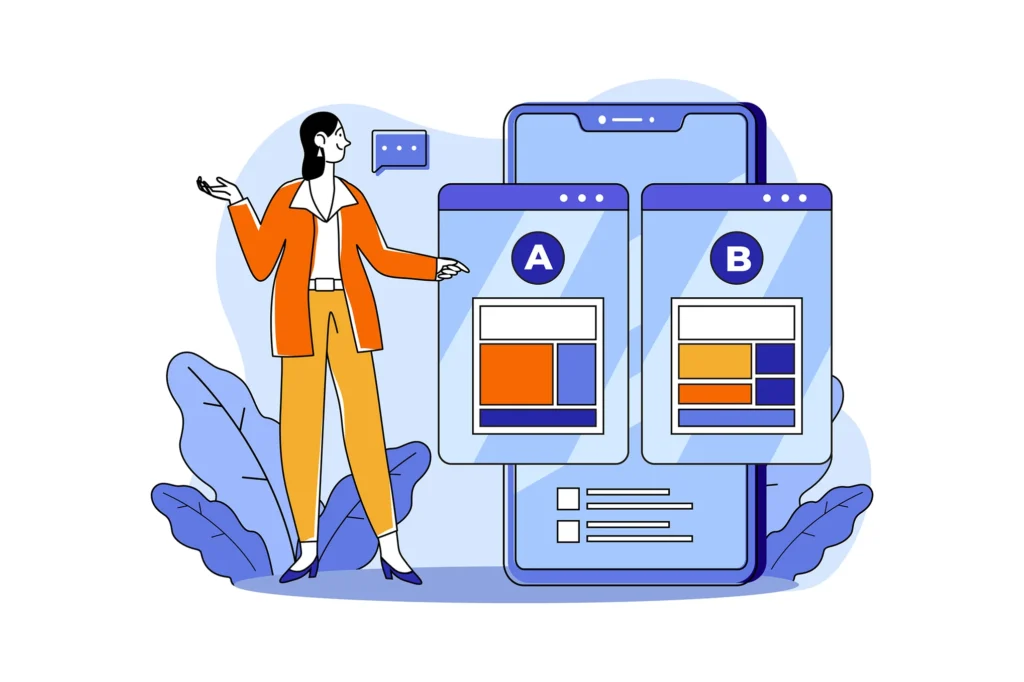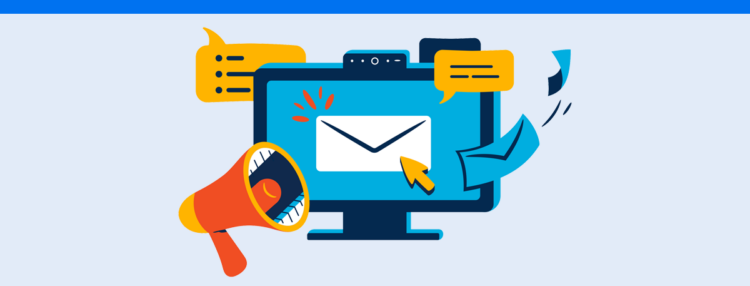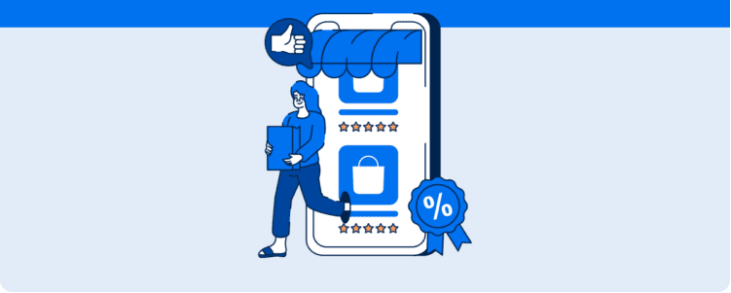Saiba o que é newsletter e como produzir conteúdos mais eficientes para enviar por e-mail para seus assinantes
A newsletter is a powerful tool for businesses and content creators aiming to connect directly and personally with their audience.
With the increasing competition on social media and constant algorithm changes, having a communication channel that lands directly in your customer’s inbox is essential.
But what exactly is a newsletter, and how do you create one that truly engages your readers? In this article, we’ll explore these questions and provide a guide to crafting effective content, from setting clear objectives to analyzing metrics. Keep reading!
What is a Newsletter?
A newsletter is a digital publication sent regularly via email to a list of subscribers who have opted in to receive it. Originally, they were used by companies to keep customers informed about updates and promotions.
However, with the evolution of digital marketing, newsletters have become an essential tool not only for driving sales but also for building relationships and customer loyalty.
This is because newsletters allow you to share exclusive content, industry insights, success stories, and other valuable information directly with your audience.
Unlike social media, where content can get lost in the constant stream of information and is subject to algorithms, email provides direct and personalized communication.
This way, you have full control over the message and can ensure it reaches the recipient without intermediaries.
How to Create Engaging Newsletters?
But beyond simply sending periodic emails, creating a newsletter should focus on audience engagement.
In other words, it’s about building a well-defined strategy that aligns your brand’s objectives with the needs and interests of your readers.
After all, a successful newsletter is one that subscribers eagerly anticipate, delivers value in every edition, and strengthens the connection between you and your audience.
With that in mind, let’s break down the essential steps to crafting standout content that captures attention and builds audience loyalty. Ready? Let’s dive in!
1. Defining Objectives
Before you begin creating your newsletter, it’s essential to establish clear and measurable objectives. Ask yourself: what do you want to achieve with your content?
Some common objectives include:
- Increasing sales: promoting products or services, offering exclusive discounts, and driving purchases.
- Educating your audience: sharing knowledge, tutorials, and information that positions your brand as an authority in the industry.
- Promoting content: driving traffic to your blog, website, or social media channels, boosting engagement and visibility.
- Building relationships: strengthening connections with customers to ensure loyalty and satisfaction.
With these objectives in mind, you’ll be able to guide the content and tone of your newsletter and determine which metrics to monitor to evaluate the success of your email campaigns.
2. Creating Relevant Content
To keep your subscribers engaged, it’s essential to provide content that is not only interesting but also relevant and useful. Here are some tips to achieve that:
- Know your audience: use surveys, feedback, and demographic data to understand what your readers want and need.
- Be original: avoid recycling content they may have already seen elsewhere. Provide exclusive insights, informed opinions, or insider information.
- Stay consistent: maintain a tone and style that reflect your brand’s identity, creating a cohesive experience in every edition.
- Include calls to action (CTAs): encourage readers to interact, whether by visiting your website, participating in a promotion, or sharing the content with friends.
- Vary content formats: mix text, images, infographics, videos, and other formats to maintain interest and cater to different content consumption preferences.
Remember, content quality directly impacts your newsletter’s open and click-through rates. The more value you deliver, the higher the subscriber engagement will be.
3. Personalization and Segmentation
In a world where consumers are constantly bombarded with information, personalization makes a significant difference in audience engagement. Here are some strategies you can implement in your newsletters:
- Always include the recipient’s name in the subject line or body of the email. Additionally, reference past purchases or interactions to offer personalized recommendations.
- Segment your email list based on interests, geographic location, purchasing behavior, or other relevant characteristics. This allows you to send tailored content that resonates with each segment.
- Use marketing automation tools to send emails triggered by specific events, such as birthdays, holidays, or actions taken on your website.
- Give subscribers the option to choose the type of content they want to receive or the frequency of emails.
This level of personalization not only increases the relevance of your messages but also shows that you value each subscriber individually, strengthening the relationship.
4. Newsletter Sending Frequency
Finding the right sending frequency is crucial to the success of a newsletter strategy. After all, sending too many emails can annoy subscribers, while sending them too infrequently may cause them to forget about you.
Therefore, analyze your audience’s preferences and test different frequencies—whether weekly, biweekly, or monthly—until you find the perfect balance.
Additionally, remember that consistency is key. Once you’ve established a frequency, stick to it to build trust and create a sense of predictability with your audience.
5. A/B Testing Execution
In addition to testing your newsletter’s sending frequency, it’s essential to run other A/B tests to optimize your campaigns.
Experiment with variations in the email subject line, layout, calls to action, or content type. By comparing the results, you can identify what works best and continuously improve your strategies.
However, remember that A/B testing is an ongoing process. What works today may not work tomorrow, so it’s crucial to keep testing and adapting your strategies to stay in sync with new trends and processes.

6. Integration with Other Marketing Strategies
To maximize the impact of your newsletter and grow your subscriber list, it’s essential to integrate it with your other marketing initiatives. Here are some tips on how to do that:
- Promote your newsletter on social media, highlighting its benefits and exclusive content.
- Align the newsletter’s themes with campaigns on other channels, reinforcing your message and boosting retention.
- Repurpose blog posts as newsletter segments or vice versa, ensuring consistent communication.
- Direct newsletter readers to your social media channels, website, or specific landing pages to drive engagement.
- Collaborate with other brands or influencers to expand reach and deliver added value to your subscribers.
This integration strengthens your brand’s presence and provides a unified customer experience, enhancing the effectiveness of all your marketing efforts.
7. Seeking Inspiration from Other Newsletters
Another valuable tip for creating an engaging newsletter is to learn from successful examples. Consider subscribing to newsletters that align with your brand and follow high-performing content, such as:
- The News: provides a curated selection of major national and international news, perfect for those who want to stay informed without spending too much time.
- Bits to Brands: sent every Thursday, focuses on branding and marketing, offering valuable insights and market trends. Its consistency in frequency and high-quality analysis are worth noting.
- Tira do Papel: delivers mini-reflections and a curated list of 4 creative links, with quick reads, twice a week—ideal for those seeking inspiration and creativity.
- Agência de Bolso: shares creative content on communication and business for agencies, offering practical insights and industry trends, making it a rich source of information for communication professionals.
When studying these newsletters, pay attention to aspects such as tone of voice, design, content structure, and calls to action. This can spark new ideas and help you identify practices you can adapt to better suit your audience.
8. Newsletter Metrics Analysis
Finally, to ensure your efforts are driving results, it’s crucial to regularly monitor and analyze your newsletter metrics. The key indicators include:
- Open rate: the percentage of subscribers who opened the email. A low rate may indicate issues with the subject line or the timing of the email.
- Click-through rate (CTR): the percentage of readers who clicked on links within the email, reflecting how engaging and relevant your content is.
- Conversion rate: the number of desired actions taken by subscribers, such as purchases, sign-ups, or downloads.
- Unsubscribe rate: the percentage of subscribers who opted out of your list. A rising rate may signal too many emails or irrelevant content.
- Bounce rate: emails that were not delivered, which can affect your sender reputation and require periodic list cleanup.
To track these metrics, use reports provided by your email marketing platform or invest in comprehensive marketing performance tools like Reportei.
With integrations to major email automation platforms—such as RD Station, Hubspot, and Mailchimp—we generate complete reports and dashboards in seconds. Plus, we offer AI-powered features, like the email marketing and automation assistant, to deliver even more valuable insights for your strategy.
Take advantage of our free trial to closely monitor your newsletter results and gain actionable ideas to make them even more effective!



